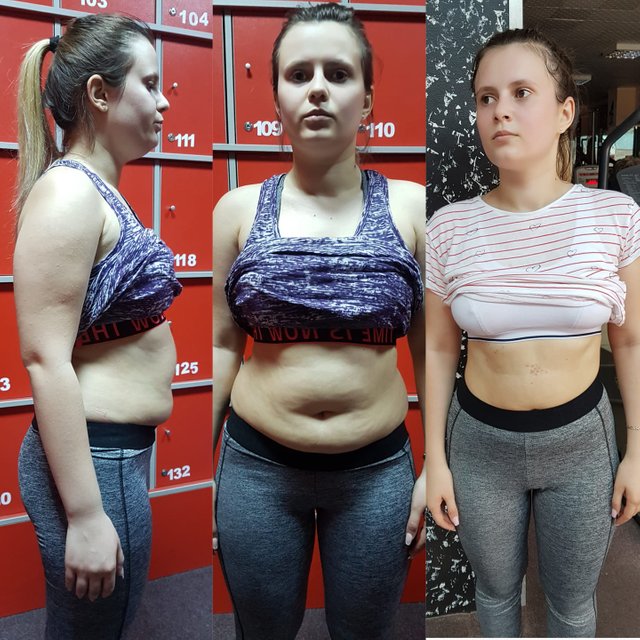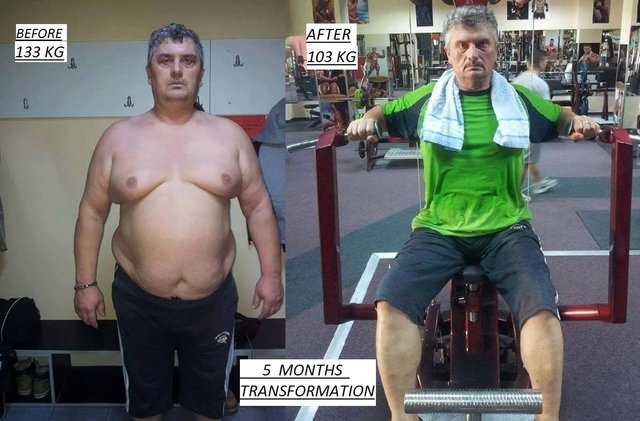How to lose weight with an intermittent fasting diet
There are many different forms of intermittent fasting. The methods vary depending on the number of fasting days and the amounts of calories.
Intermittent fasting involves total or partial abstinence from eating for a set time before eating regularly again.
Some studies suggest that this way of eating can provide benefits such as fat loss, better health and longevity. Proponents argue that an intermittent fasting program is easier to maintain than traditional calorie-controlled diets.
Each person experiences intermittent fasting in their own way, and different styles suit different people.
In this article, we look at the science behind the most popular types of intermittent fasting and offer tips on how to stick with this type of diet.
There are several methods of intermittent fasting and each person will prefer a different one. Read on for seven different ways to make intermittent fasting.

Fast 12 hours a day
The rules of this diet are simple. In principle, you should decide on a fasting period of 12 hours each day and comply.
According to some researchers, fasting for 10 to 16 hours can cause the body to convert its fat reserves into energy, thus releasing ketones (secondary compounds of lipid metabolism) into the bloodstream. This should stimulate weight loss.
This type of intermittent fasting plan can be a good option for beginners. This is because fasting is relatively short, much of fasting occurs during sleep, and the person can consume the same amount of calories each day.
The easiest way to fast for 12 hours is to include sleep time in the fasting window.
For example, a person might choose to fast from 19:00 to 7:00. They should finish their dinner before 19:00 and do not have breakfast until 7:00.
- Fast for 16 hours
Fasting 16 hours a day, leaving an 8-hour power window, is known as the 16: 8 method or the Leangains diet (It involves dividing the day into two periods: one in which you eat and another in which you do not eat).
In this type of diet, men fast 16 hours every day and women 14 hours. This type of intermittent fasting may be useful for someone who has already tried the 12-hour fast but has not seen any benefit.
In this post, dinner usually ends at 20:00 and then you do not have breakfast the next day, the next meal will be at noon.
A study of mice found that limiting the feeding window to 8 hours protected them from obesity, inflammation, diabetes and liver disease, even when they consumed the same total amount of calories as mice that ate at the same time.
- Fast 2 days a week
People who follow a 5: 2 diet consume regular amounts of healthy food for 5 days and reduce their calorie intake for the other 2 days.
During the 2 days of fasting, men usually consume 600 calories and women 500.
It is common for people to separate their fasting days during the week. For example, I can post on Mondays and Thursdays and eat normally on other days. You must have at least 1 day off between fasting days.
Research on the 5: 2 diet, also known as the fast diet, is limited. A study involving 107 overweight or obese women found that both calorie restriction twice a week and their continued restriction led to a similar weight loss.
The study also found that this diet lowered insulin levels and improved insulin sensitivity among participants.
A small study looked at the effects of this fasting style on 23 overweight women. During a menstrual cycle, women lost 4.8% of their body weight and 8.0% of their total body fat. However, these measurements returned to normal for most women 5 days after returning to their normal diet.
- Alternative fasting method (fasting 1 day yes, 1 day yes)
There are several variations of the alternate day fasting plan. For some people, the alternate day fast means the total avoidance of solid foods on fasting days, while other people can consume up to 500 calories. On days without fasting, they often choose to eat as much as they want. One study reports that alternative daily fasting is effective for weight loss and heart health in both healthy and overweight adults. The researchers found that the 32 participants lost an average of 5.2 kilograms (kg), or just over 11 kilograms (lb), over a 12-week period. Alternative daytime fasting is an extreme form of intermittent fasting and may not be suitable for beginners or people with certain medical conditions. It can also be difficult to maintain this type of job in the long run.
- Mancanca-Stop-Mancanca method (you fast 24 hours, 1-2 times / week)
Fasting for 1 or 2 days a week, known as Eat-Stop-Eat, means not eating 24 hours a day. Many people fast from breakfast until the next day for breakfast or from lunch until the next day at noon. People who follow this diet plan can drink water, tea and other calorie-free drinks during fasting. But they should return to their normal eating patterns on fasting days. Eating this way reduces a person's total calorie intake, but does not limit the specific foods they can eat.
A 24-hour fast can be challenging and can cause fatigue, headaches or irritability. Many say that these effects diminish over time as the body adapts to this new food pattern.
Benefits can be achieved by trying a 12- or 16-hour fast before switching to a 24-hour fast.
- Jump over tables
This flexible approach to intermittent fasting may be best for beginners. It involves jumping over the occasional table.
People can decide which meals to skip depending on their level of hunger or time constraints. But, it is important to eat healthy foods at every meal.
The method of skipping meals is more likely to be successful when people monitor and respond to their body's hunger signals. In short, people who use this style of intermittent fasting will eat when they are hungry.
This may seem more natural to some people than other methods of fasting.

- The warrior's diet
This diet is a relatively extreme form of intermittent fasting.
The Warrior's diet involves consuming very little, usually just a few servings of raw fruits and vegetables, over a 20-hour fasting period, and then eating a large meal in the evening. The power window is usually about 4 hours.
This form of fasting may be better for people who have already tried other forms of intermittent fasting.
Proponents of the warrior diet claim that human beings are nocturnal eaters and allow the body to obtain nutrients in harmony with its circadian rhythms (it is a cycle of about 24 hours of biochemical, physiological or behavioral processes).
During the 4-hour eating phase, people should make sure they eat lots of healthy vegetables, proteins and fats. It should also include some carbohydrates.
Although it is possible to eat some foods during the fasting period, it can be difficult to follow strict instructions on when and what to eat in the long run. It is also very difficult for some to eat near bedtime.
There is also a risk that people who follow this diet will not eat enough nutrients, such as fiber. This can increase the risk of cancer and negatively affect digestive and immune health.
The following tips can help you stay on track and maximize the benefits of intermittent fasting:
Keep yourself hydrated. Drink plenty of water and calorie-free drinks, such as herbal teas, throughout the day.
Avoid the obsession with food. On fasting days, keep your mind busy to avoid thinking about food, for example: arranging your documents or watching a movie, listening to music, reading a book, etc.
Rest and relax. Avoid tiring activities on holidays, although light exercises such as yoga can help.
Be smart when choosing your calories. If the plan you choose allows for certain calories during fasting periods, select foods rich in nutrients, protein, fiber, and healthy fats. You can eat beans, lentils, eggs, fish, nuts and avocados.
Eat high-volume foods. Select satisfying but low-calorie foods such as popcorn, raw vegetables and high-water fruits such as grapes, cucumbers, melons, grapefruit.
Season foods generously with garlic, herbs (coriander, mint, rosemary, nutmeg, apricot, basil, turmeric) or vinegar. These foods are extremely low in calories, but strongly flavored, which can help you not feel the need to eat more.
Choose nutrient-rich foods after the fasting period. Eat foods high in fiber, vitamins, minerals and other nutrients to keep your blood sugar healthy and to avoid nutrient deficiencies. A balanced diet will also contribute to weight loss and overall health.
Forecast
There are many ways to post intermittently and there is no one plan that works for everyone. People will do better if they try different styles to see which one suits their lifestyle and preferences.
Regardless of the type of intermittent fasting, fasting for long periods of time when your body is unprepared can cause problems.
congratulations, I want too